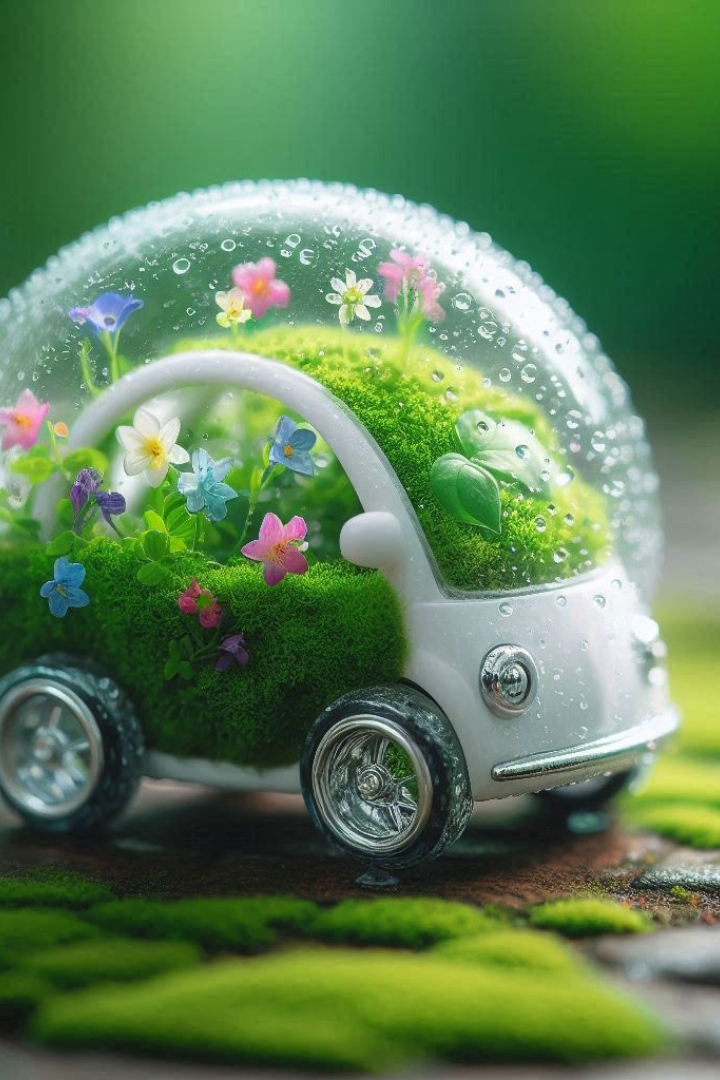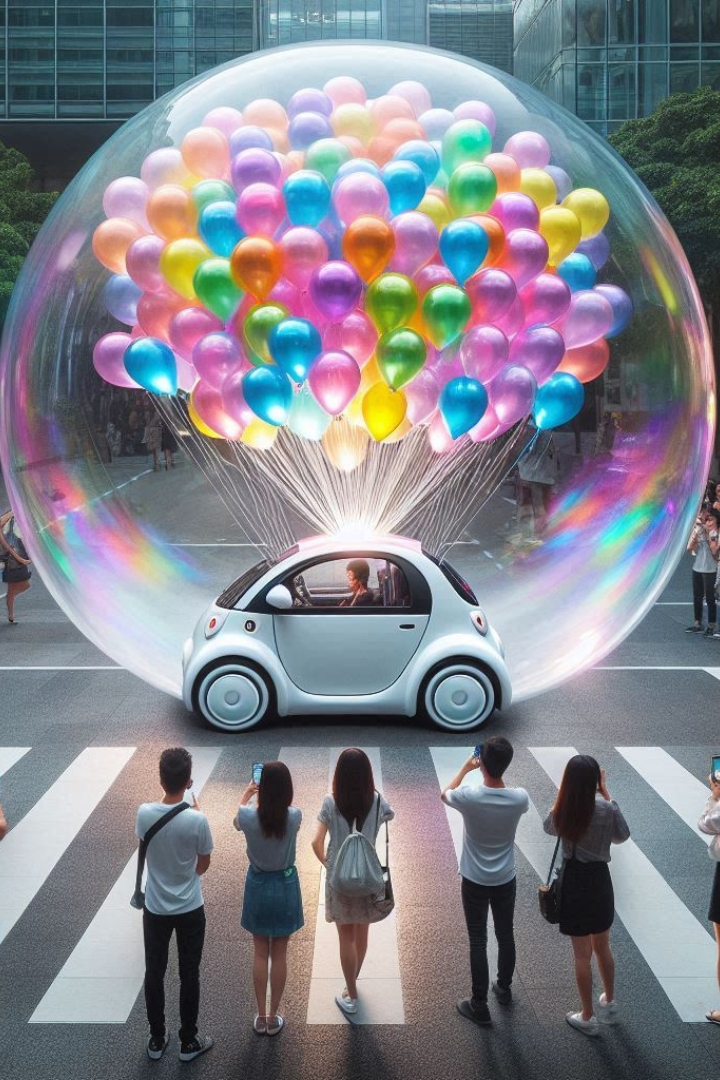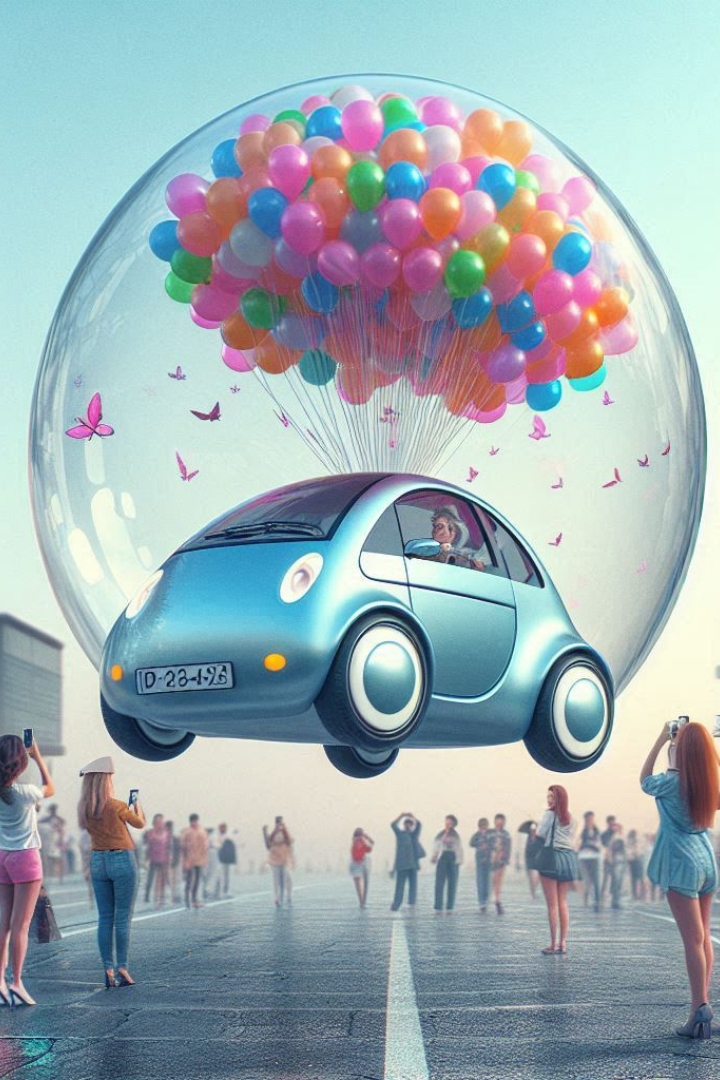Bubble Cars: A Comprehensive Exploration 20
Table of Contents
- Bubble Cars: A Comprehensive Exploration 20
Introduction
Bubble vehicles, otherwise called microcars, have intrigued car aficionados and regular customers the same with their conservative plan and novel appeal. Arising fundamentally in the post-The Second Great War time, these little vehicles were brought about for a specific need, tending to financial and material limitations while offering reasonable and proficient transportation. This article digs into the set of experiences, plan, social effect, and fate of air pocket vehicles, portraying these little wonders.
Historical Background
Beginnings
The idea of the air pocket vehicle can be followed back to Europe during the 1940s and 1950s when nations were recuperating from the pulverization of The Second Great War. Monetary circumstances required a type of transportation that was both reasonable and eco-friendly, prompting the introduction of microcars. These vehicles were much of the time portrayed by their little motors, lightweight designs, and moderate highlights.
Early Trailblazers
1. BMW Isetta: One of the most notorious air pocket vehicles, the Isetta, was initially planned by the Italian organization Iso SpA. Nonetheless, it was BMW’s transformation that acquired boundless prominence. With a solitary chamber motor and unmistakable front-opening entryway, the Isetta turned into an image of post-war development.
2. Messerschmitt KR200: . Its pair seating and low profile were suggestive of a cockpit, catching the creative mind of customers.
3. Heinkel Kabine: Another airplane maker turned vehicle maker, Heinkel presented the Kabine, a minimal and productive vehicle that underscored straightforwardness and common sense.

Design and Engineering
Unmistakable Elements
Bubble vehicles are described by a few key highlights that recognize them from regular vehicles:
• Conservative Size: Normally estimating under 3 meters long, bubble vehicles are intended to explore limited roads and restricted parking spots easily.
• Lightweight Development: Using materials like aluminum and fiberglass, these vehicles focus on productivity over extravagance, bringing about lower fuel utilization.
• Little Motors: Going from 125cc to 600cc, the motors in bubble vehicles are intended for short drives and metropolitan traveling, frequently accomplishing noteworthy mileage.
• Remarkable Style: With adjusted shapes and huge windows, bubble vehicles look like their namesake, offering great perceivability and an unconventional appearance.
Specialized Advancements
1. Front-Opening Entryways: Promoted by the BMW Isetta, the front-opening entryway configuration was both a space-saving measure and a complex decision, improving the vehicle’s openness and appeal.
2. Three-Wheeled Setups: Many air pocket vehicles, similar to the Messerschmitt KR200, included a three-wheeled plan to decrease weight and assembling costs while as yet giving solidness.
3. Rear-Mounted Motors: Putting the motor at the back of the vehicle considered more lodge space and further developed weight circulation, adding to the air pocket vehicle’s coordinated dealing with.
Social Effect
Image of Post-War Hopefulness
Bubble vehicles arose as images of trust and recuperation in the post-war time. Their bright plans and down to earth nature reverberated with customers looking for versatility and freedom in a period of modifying. These vehicles addressed a takeoff from the gravity of the conflict years, offering a brief look into a more brilliant, more prosperous future.
Impact on Mainstream society
Bubble vehicles immediately found their direction into mainstream society, showing up in films, TV programs, and publicizing efforts. Their eccentric plans and reduced size made them ideal for comedic scenes and visual gags, charming them to crowds around the world.
True to life Appearances: The BMW Isetta, for instance, acquired notoriety in films like “The Addams Family” and the English TV series “Mr. Bean,” where its characteristics were cleverly featured.
Promoting Symbols: With their eye-getting plans, bubble vehicles were much of the time highlighted in notices, frequently representing advancement and development.
The Social Meaning of Air pocket Vehicles
Post-War Europe and the Introduction of Microcars
The outcome of The Second Great War left Europe in a condition of monetary difficulty, with numerous urban communities in remains and unrefined substances hard to find. This climate required a change in the auto business towards more practical and asset productive vehicles. Bubble vehicles arose as an answer, offering reasonable transportation to a populace excited for versatility and opportunity.
An Image of Development
Bubble vehicles addressed a feeling of development and versatility in a period of modifying. Their interesting plans and conservative aspects caught the creative mind of the general population, representing another period of probability and progress. For some, claiming an air pocket vehicle was about common sense as well as about partaking in a forward-looking development that focused on effectiveness and creativity.
Effect on Style and Plan
The particular feel of air pocket vehicles, with their adjusted shapes and energetic tones, affected style and configuration patterns of the period. They were in many cases highlighted in commercials and media as symbols of advancement, lining up with the hopeful standpoint of the 1950s and 1960s. The air pocket vehicle’s perky plan components were reflected in the more extensive social scene, affecting everything from engineering to purchaser items.
Technical Innovations and Design Features
Lightweight Development and Materials
Bubble vehicles were pioneers in utilizing lightweight materials to upgrade eco-friendliness and execution. Producers explored different avenues regarding aluminum, fiberglass, and, surprisingly, plastic to lessen weight and further develop mobility. This emphasis on lightweight development set a trend for future car designing, featuring the advantages of material development.
Optimal design and Productivity
The smoothed out states of air pocket vehicles were stylishly satisfying as well as practically productive. Fashioners focused on optimal design to limit drag and amplify eco-friendliness, bringing about the particular adjusted structures that became inseparable from microcars. These plan standards have kept on affecting auto plan, especially in the advancement of electric and crossover vehicles.
Imaginative Entryway Plans
One of the most notorious highlights of air pocket vehicles was their unpredictable entryway plans. The BMW Isetta’s front-opening entryway, for instance, was both a space-saving arrangement and an unmistakable plan component. Different models, similar to the Messerschmitt KR200, used side-opening coverings suggestive of military aircraft cockpits. These imaginative ways to deal with vehicle access added to the air pocket vehicle’s novel appeal and common sense.

Notable Models and Manufacturers
BMW Isetta
The BMW Isetta is maybe the most notorious of all air pocket vehicles, with its particular egg-molded plan and single front entryway. Initially planned by the Italian organization Iso SpA, BMW gained the freedoms to create the Isetta in 1954. The vehicle highlighted a 250cc motor and was equipped for arriving at paces of up to 50 mph, making it an optimal answer for metropolitan driving.
Messerschmitt KR200
The Messerschmitt KR200, created by the German airplane maker Messerschmitt, was known for its couple guest plan and three-wheeled plan. With a 191cc motor, the KR200 was both productive and nimble, interesting to shoppers looking for a minimized and polished vehicle. Its remarkable plan drew motivation from the avionics business, mirroring Messerschmitt’s skill in optimal design and lightweight development.
Heinkel Kabine
The Heinkel Kabine was one more unmistakable air pocket vehicle of the time, created by the German producer Heinkel. The Kabine was accessible in both three-and four-wheeled setups, highlighting a 174cc motor and a maximum velocity of around 50 mph. Its minimized size and productive execution pursued it a well known decision for metropolitan tenants in post-war Europe.
Iso Isetta and Velam Isetta
Notwithstanding BMW’s variant, the Isetta was additionally created under permit by different producers, remembering Iso SpA for Italy and Velam in France. These adaptations held the unmistakable plan of the first while integrating territorial varieties to suit neighborhood markets. The Iso Isetta and Velam Isetta added to the broad ubiquity of the air pocket vehicle idea across Europe.
Impact on the Automotive Industry
Reclassifying Vehicle Plan
Bubble vehicles tested customary ideas of vehicle configuration, showing the way that more modest, more effective vehicles could address the issues of shoppers. Their prosperity urged producers to investigate new plan standards and reexamine the connection between size, execution, and usefulness. This shift laid the foundation for the advancement of current conservative and subcompact vehicles.
Impact on Metropolitan Transportation
The ascent of air pocket vehicles featured the requirement for productive metropolitan transportation arrangements. Their little size and mobility made them ideal for exploring blocked city roads, making ready for the advancement of other metropolitan centered vehicles like the Savvy Fortwo and the Renault Twizy. Bubble vehicles likewise added to the developing consciousness of natural and maintainability issues, stressing the significance of decreasing the environmental impression of transportation.
Tradition of Advancement
The inventive soul of air pocket vehicles keeps on moving contemporary car plan and designing. Ideas spearheaded by microcars, like lightweight development, productive utilization of room, and streamlined plan, stay key to the improvement of present day vehicles. As the car business keeps on developing, the tradition of air pocket vehicles perseveres as a demonstration of the force of imagination and genius in tending to the difficulties of transportation.
The Resurgence of Interest in Bubble Cars
Collectible Things of beauty
Lately, bubble vehicles have become significantly sought-after collectibles, with fans and finders drawn to their fascinating plans and obvious significance. Restored models regularly request extravagant expenses at deals, reflecting the helping through appeal of these microcars. The creating interest in exemplary air pocket vehicles has similarly provoked the game plan of clubs and events dedicated to defending and lauding these famous vehicles.
Current Interpretations and Headways
The norms of air pocket vehicle setup have tracked down new explanation in current vehicles that attention on adequacy, acceptability, and metropolitan conveyability. Electric microcars like the Microlino and the Splendid Fortwo give legitimate regard to the air pocket vehicle legacy while merging pattern setting development and innocuous to the environment features. These state of the art understandings offer a concise investigate the destiny of transportation, where more modest and useful vehicles expect a pressing part in keeping an eye on the challenges of metropolitan dwelling.

The Social Context of Bubble Cars
Post-War Economic Realities
After World War II, Europe faced severe economic challenges. The war had left infrastructure damaged, economies depleted, and resources scarce. During this period, personal vehicles became a symbol of freedom and independence, but traditional cars were expensive and impractical for many. Bubble cars provided an affordable, practical solution, enabling individuals to regain mobility without significant financial burden. These vehicles catered to the needs of working-class families and young professionals, offering a taste of the automotive experience at a fraction of the cost.
Cultural Shifts
Bubble cars embodied these ideals with their futuristic designs and novel engineering solutions. They were seen as an expression of modern life, blending functionality with style. The quirky and approachable nature of bubble cars also made them popular among younger generations, who were eager to embrace new technologies and lifestyles.
Technological Advancements
Engine and Transmission
Bubble vehicles were arranged considering capability, much of the time featuring little removing engines that went from 125cc to 600cc. These engines were generally air-cooled and mounted at the rear of the vehicle to save space and decline weight. The ease of the engines simplified them to stay aware of and fix, a huge work out their certain gathering.
Many air pocket vehicles used cruiser or bicycle engines as a result of their moderate size and lightweight. For instance, the BMW Isetta utilized a lone chamber engine obtained from the association’s cruiser division. The transmission structures in bubble vehicles were furthermore planned for ease and cost-suitability, often featuring manual gearboxes with less pinion wheels than standard vehicles.
Suspension and Managing
Despite their little size, bubble vehicles were intended for consistent quality and portability. Many models utilized free suspension systems to give a smooth ride over unbalanced surfaces. The three-wheeled arrangement typical in many air pocket vehicles, similar to the Messerschmitt KR200, offered a concordance among security and cost hold reserves. This plan reduced the prerequisite for complex coordinating and suspension parts, making creation more affordable and less intricate.
Prosperity Considerations
Detailed Design Aspects of Bubble Cars
Reduced Aspects and Space Use
Bubble vehicles were planned with an accentuation on expanding space productivity inside an insignificant impression. Their reduced aspects frequently prompted clever answers for inside design and ease of use. For instance:
• Inside Format: Many air pocket vehicles highlighted couple seating, where inhabitants sat one behind the other, as opposed to one next to the other. This design, found in models like the Messerschmitt KR200, considered a smaller vehicle without forfeiting traveler space.
• Capacity Arrangements: In spite of their little size, bubble vehicles frequently included sharp capacity arrangements. The BMW Isetta, for example, had a little trunk space open through the front entryway, while the Heinkel Kabine incorporated a back baggage compartment.
Ergonomic and Tasteful Highlights
Bubble vehicles were not simply utilitarian; they likewise consolidated ergonomic and tasteful highlights that put them aside from traditional vehicles:
• Huge Windows: Many air pocket vehicles had extensive windows to improve perceivability and make an open, vaporous inclination inside. This plan decision was both down to earth, giving better sightlines in metropolitan conditions, and complex, adding to their exceptional look.
• Adjusted Shapes: The adjusted, bulbous states of air pocket vehicles were both efficiently productive and outwardly unmistakable. This plan diminished drag and further develop eco-friendliness, while likewise giving the vehicles an unconventional, receptive appearance.

Conclusion
Bubble cars, with their innovative designs and enduring charm, have left an indelible mark on the automotive landscape. From their origins in post-war Europe to their resurgence in the modern era, these microcars continue to captivate and inspire. As the world moves towards a more sustainable future, the lessons learned from the bubble car movement remain relevant, offering valuable insights into the possibilities of efficient and eco-friendly transportation. Whether as cherished classics or cutting-edge modern vehicles, bubble cars stand as a testament to the ingenuity and adaptability of the automotive industry, proving that even the smallest vehicles can have a significant impact on the world.
FAQs about Bubble Cars
- What is a bubble car?
A bubble car, also known as a microcar, is a small, compact vehicle that was popular primarily in the 1950s and 1960s. It is characterized by its lightweight construction, small engine, and distinctive, often rounded design. Bubble cars were designed to provide economical and efficient transportation in the post-World War II era.
- Why were bubble cars created?
Bubble cars were created in response to post-war economic conditions and material shortages. After World War II, many European countries faced economic challenges, and there was a need for affordable and fuel-efficient transportation. Bubble cars provided a solution by offering an inexpensive vehicle that was easy to manufacture and maintain.
- What are some examples of famous bubble cars?
Some of the most iconic bubble cars include:
- BMW Isetta: Known for its front-opening door and single-cylinder engine.
- Messerschmitt KR200: Notable for its aviation-inspired design and tandem seating.
- Heinkel Kabine: Available in both three-wheeled and four-wheeled versions.
- Goggomobil: Featured a more conventional car-like design.
- How fast can bubble cars go?
Bubble cars typically had modest performance capabilities. Most models had top speeds ranging from 50 to 60 mph (80 to 100 km/h). Their small engines and lightweight construction were optimized for city driving rather than high-speed travel.
- Are bubble cars safe?
While bubble cars were designed with basic safety features, they generally lack the advanced safety technology found in modern vehicles. Their lightweight construction and small size made them less crash-resistant compared to larger cars. Safety standards and regulations have evolved significantly since the era of bubble cars.
- What kind of fuel economy do bubble cars offer?
Bubble cars were known for their excellent fuel economy due to their small engines and lightweight design. Many models achieved fuel consumption rates of around 50 to 70 miles per gallon (4.7 to 3.4 liters per 100 km), making them highly efficient compared to contemporary vehicles.
- Are bubble cars still in production?
No, bubble cars are no longer in production. However, their design principles and legacy continue to influence modern microcars and electric vehicles. Some manufacturers have introduced new models inspired by the bubble car concept, such as the Microlino and the Renault Twizy.
- Where can I find a bubble car today?
Bubble cars can be found through classic car dealerships, online auctions, and specialty collector markets. Restored models are often showcased at classic car shows and events. Due to their rarity, finding a bubble car in good condition may require some effort and may be costly.
- What are the most common issues with bubble cars?
Common issues with bubble cars include:
- Parts Availability: Finding original or replacement parts can be challenging due to their age and limited production.
- Rust and Corrosion: Many bubble cars are susceptible to rust, particularly in older models.
- Engine Maintenance: The small engines used in bubble cars require regular maintenance to ensure reliability.
- How can I restore a bubble car?
Restoring a bubble car involves several steps:
- Assessment: Evaluate the condition of the vehicle, including the body, engine, and interior.
- Sourcing Parts: Locate original or compatible parts for replacement and repair.
- Professional Help: Consider working with a specialist or restoration shop experienced in classic cars.
- Restoration: Perform repairs and refinishing to restore the vehicle to its original condition.
- Are bubble cars collectible?
Yes, bubble cars are highly collectible, particularly among enthusiasts and collectors of classic automobiles. Their unique design and historical significance make them sought-after items at auctions and classic car shows.
- How did bubble cars influence modern automotive design?
Bubble cars influenced modern automotive design by demonstrating the benefits of compact, efficient vehicles. Their emphasis on lightweight materials, aerodynamic design, and space efficiency has inspired the development of contemporary microcars, electric vehicles, and urban mobility solutions.
